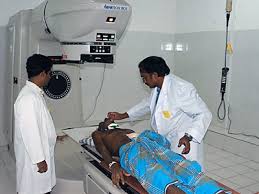Every Year 1.30 Lakh Indian Women Diagnosed With Cervical Cancer
 According to WHO estimations that every year more than 1.30 lakh Indian women are diagnosed with cervical cancer, and around 74,000 fall prey to it.
According to WHO estimations that every year more than 1.30 lakh Indian women are diagnosed with cervical cancer, and around 74,000 fall prey to it.
WHO revealed this figure in spite of the fact that cervical cancer is preventable.
According to a paper released by Qiagen, the German global market leader in sample technology and CNCI, a state-run Cancer Research Institute on Tuesday, “This makes cervical cancer the leading cause of cancer-related deaths in India and represents approximately one-fourth of the world's total cervical cancer cases and mortality.”
Quoting WHO, it said that cervical cancer was the most common type of cancer in India, having a deadly effect on women.
It added that it was the second-most common cancer after breast cancer in the world.
The human papillomavirus, also called HPV, was a common pathogen affecting women mostly.
At a press meeting to declare strategic partnership in the fight against cervical cancer, the paper released that about 80% of women catch one or more types of virus by 50.
It added that there were over 100 types of HPV, out of which around 15 high-risk types were known to give rise to virtually all cervical cancer cases.
The report also said that there is proof that other factors may raise cervical cancer risk when combined with HPV, including smoking and illnesses that lessen the body's capability to fight infections.
It further said that clinical trial results from WHO's International Agency for Research on Cancer (IARC) and released in 'New England Journal of Medicine' (April 2, 2009) showed that HPV DNA examination was the most effectual method to decrease occurrence of cervical cancer as compared to either Pap (cytology) testing or visual inspection with ascetic acid (VIA).
Moreover, the study showed that a single round of HPV examination was connected with a major reduction in the number of advanced cervical cancers and deaths from the disease.
WHO estimates that only about five per cent of women in the developing world have been screened for the cervical disease in the previous five years compared to 40-50 per cent in the developed world.